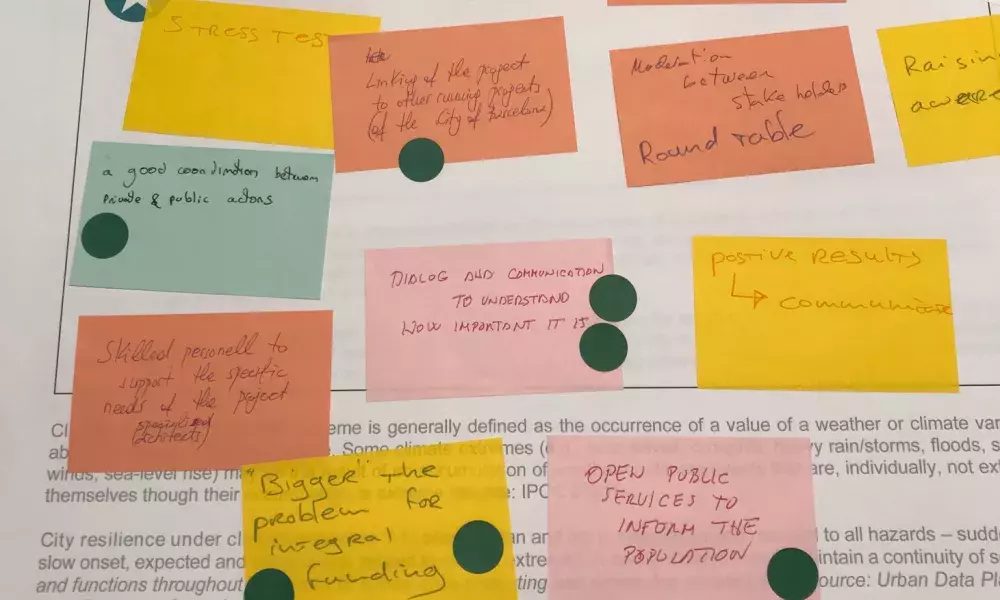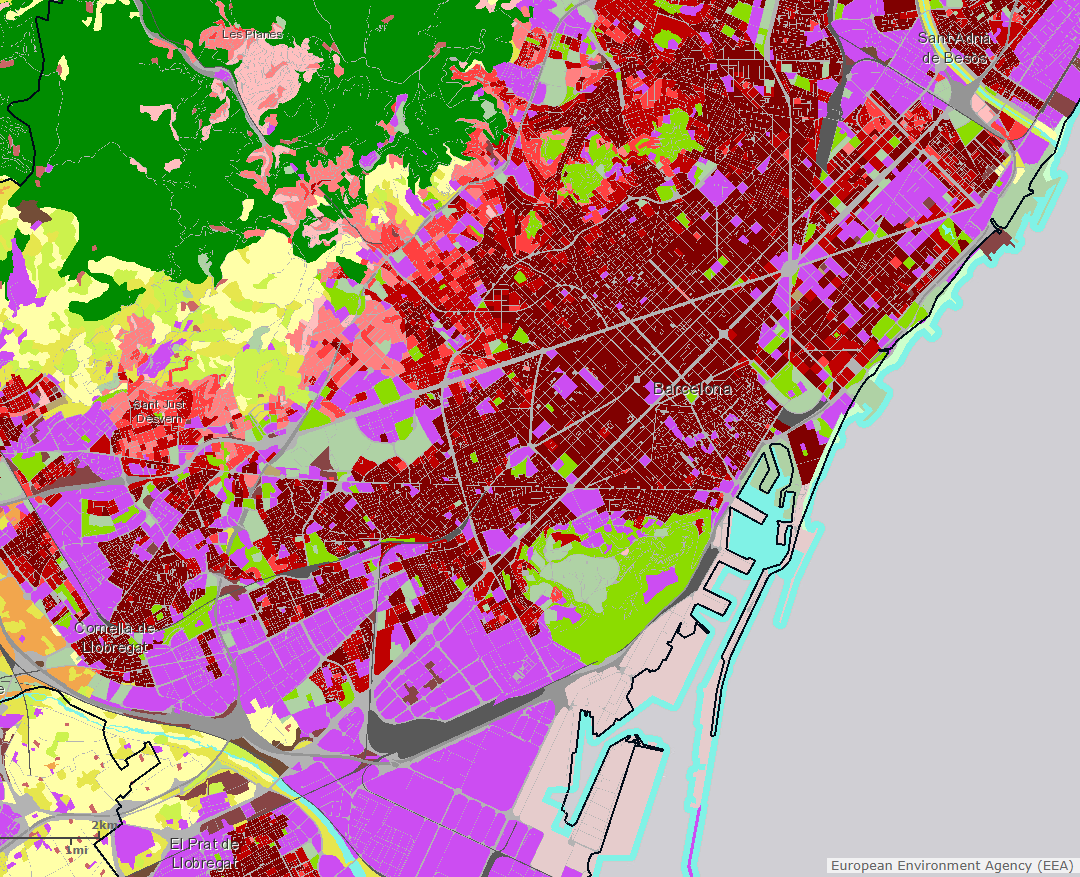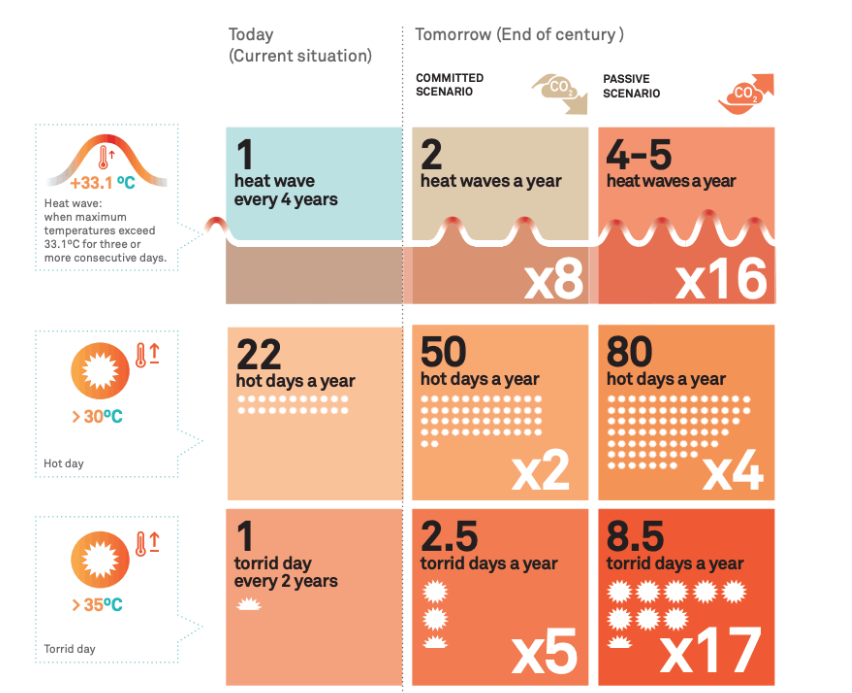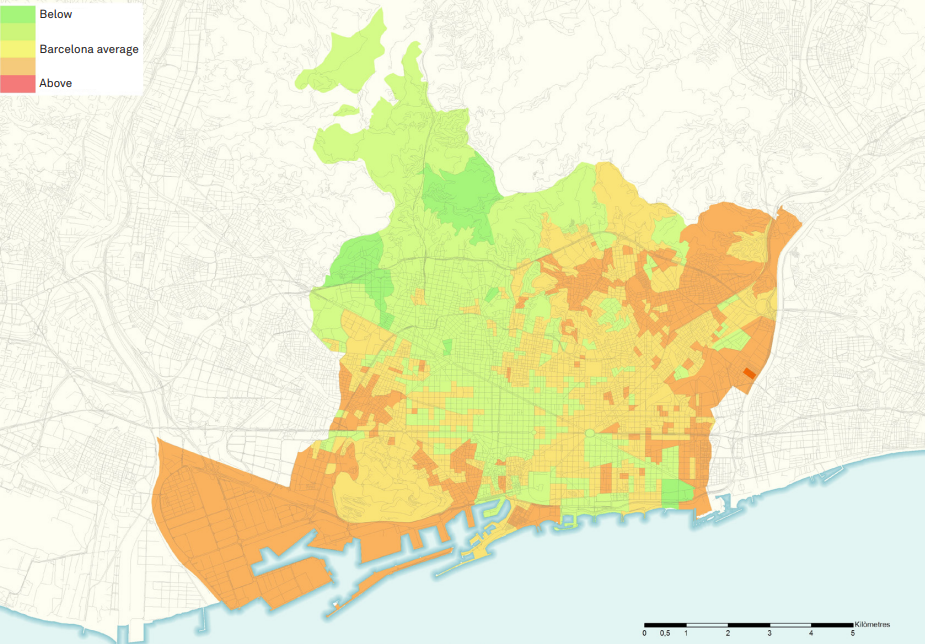A blueprint of actions at the city scale for a successful adaptation plan to climate change - Recommendations from the Barcelona GBG_AS2C project

While cities promote efforts to limit the temperature increase to 1.5°C, the objective is still far-reaching. At the same time, cities already experience the compound effects of climate change (for instance droughts and heat waves). To this end, cities need to determine the critical pathways to improve their adaptation to climate change. They need also to work proactively with their stakeholders to build and invest in the infrastructure and incentives to cope with existing climate change impacts as well as those anticipated for the next decades.
The UIA Green-Blue-Gray project to Adapt Schools to Climate Change (GBG_AS2C)
Barcelona is a compact city of 1.6 million inhabitants with a hot and humid climate in the warm period of the year. The city is exposed to an excessive heat burden that is expected to raise in the following decades due to the increased frequency and intensity of heatwaves because of climate change.
The GBG_AS2C project implemented an innovative adaptation[1] plan to climate change through the conversion of schoolyards to “cool islands” (termed as Climate Shelters) primarily with a mix of blue (water points), green (more shadow spaces and greenery in the courtyards), gray (interventions on the buildings and use of permeable materials) measures. The project has already converted 11 schools into climate shelters, whereas the City of Barcelona increased the number to 30 schools by exploiting another running program.
Urban greenery contributes to a considerable reduction of urban overheating through evapotranspiration and shading. It removes pollutants and contributes to the retention of stormwater runoff, and improves the health of urban residents.
Urban fabric (impermeable construction materials) influences the land surface and air temperature fields and reduces the cooling strength of rainwater evaporation. Several cities around the world have promoted programs for replacing typical urban materials with climate-friendly ones.
The blueprint of actions
Be part of an overarching climate strategy
Barcelona implements a thorough Climate Plan in view of both mitigation and adaptation to climate change. The main targets for 2030 are to reduce its levels of CO2 equivalent emissions by 40% per capita compared to those for 2005 (mitigation) and to increase the urban green space by 1.6 km2, in other words, 1 m2 for each current resident.
The Plan includes several medium and long-term targets[2] and in particular promotes the transformation of communal spaces as a climate change tackling strategy.
Listen to the city
Cities are dynamic systems. Their land cover changes over time, thus influencing the state of the thermal environment and potentially the vulnerability of the city to climate change. Periodic updates of land cover are important for focused adaptation (Figure 1).

Figure 1. Land cover of Barcelona (source: Urban Atlas 2018). Dark red: continuous urban fabric; purple: commercial or industrial units; green: urban greenery.
Conduct a climate risk[3] assessment
The definition of the state of the city environment as well as of the impacts of climate change at the local level are critical preconditions for the creation of a focused adaptation plan to climate change. In the event that the above preconditions are not met, the benefits from the application of the respective measures are considerably reduced.
In the GBG_A2CC, an analysis of the prevailing environmental and climatic conditions was performed and was further supported by estimates of future impacts of climate change on the city as described in the Climate Plan of Barcelona. Figure 2 presents the impacts of climate change on Barcelona and Figure 3 shows the spatial vulnerability of Barcelona to heat waves.

Figure 2. Impacts of climate change on Barcelona (source: Climate Plan 2018-2030, City of Barcelona).

Figure 3. Barcelona’s spatial vulnerability to heat waves (source: Climate Plan 2018-2030, City of Barcelona).
Incorporate climate risk into urban planning
Traditional urban planning that ignores local climate conditions and climate risks, may easily fail to deliver the anticipated results. Urban planning[4] should consider every parameter that potentially mitigates climate risks (e.g. heat waves):
- the urban form of the city (for instance if the city has tall buildings along narrow streets),
- the type of materials on the ground (some can absorb a higher amount of solar radiation), the ventilation corridors (which may block air to flow freely between buildings),
- the spatial distribution, extent, and type of greenery,
- the sky view factor of buildings (which controls their exposure to the sun), and eventually
- the spatial and temporal (day and night) air and land surface temperatures per neighborhood or even building block and the respective thermal comfort.
Concentrate on actions that play to the city’s strengths
In building an adaptation agenda, cities need to not only anticipate the consequences of climate risks but also choose among several of possible actions. To this end, cities should concentrate on actions that play to their strengths—in terms of resources, physical features and assets, and governing control—while offering a high return in terms of risk reduction.
Identifying such high-impact adaptations can be difficult, given the variability of climate risks and the lack of capacity of many cities. At the same time, it is also important to remember the cascading positive effects as adaptation can result in wider benefits in such fields as equity, public health, infrastructure, real estate, and tourism.
Seek solutions with multiple benefits
By nature, schools are relevant spaces where actions can be promoted to adapt the city to climate change for the benefit of all. Any action carried out in schools maximizes its impacts once considering the vulnerable population they host, as well as their low level of adaptation to heat due to infrastructure deficiencies. Moreover, their spatial distribution in the city ensures dispersion in the communities, while they also offer the possibility for continuous use throughout the year.
GBG_A2CC invests in the transformation of schoolyards into “cool islands” and has a strong pillar on urban health, by means of reducing the concentrations of air pollutants and improving thermal comfort both indoor and outdoor. To this end, the dispersion of Climate Shelters to all districts of the city, and most importantly to deprived ones, supports just transition.
Improve governance – drive the potential of the public sector
To achieve success, a city must integrate its policy for adaptation to climate change into the full range of city activities: programs, decision-making processes, and more. In addition, the policy needs skilled or re-skilled staff on climate change adaptation and institutional support to ensure accountability.
Act in a collective manner to tackle the climate emergency
Cities should use their convening power to bring together civil society organizations, businesses, unions, academic organizations, etc. to accelerate progress towards inclusive climate policies, pool resources, and set up platforms for collective action, such as the joint procurement of renewable materials and eco-innovative products. These coalitions should clearly set out to regional/national governments what is needed to accelerate their efforts.
The mobilization of the private sector is also important, especially in the event that investments are not in their core activities of businesses or the return on investment is not recognized. In this case, it is recommended that local and/or regional authorities provide incentives to build a market for green solutions and support public-private partnerships.
Trust participatory processes
A thorough co-creation participatory process with the local societies is beneficial for the endorsement of an adaptation plan to climate change at the local or neighborhood scale. GBG_A2CC is an excellent showcase of urban governance with and for the citizens, namely decision making as close as possible to the citizen, open deliberations, and finally co-creation of interventions and technical solutions[5].
Involve knowledge institutions
Adaptation to climate change requires detailed knowledge of local climate and climate risks, methods, and tools. Knowledge institutions can bring in the required scientific knowledge, feed with best practices, promote innovation, support the monitoring and evaluation process through comparative analysis[6] and enhance dissemination actions by documenting changes. In the case of the GBG_2AC project, three higher education and research institutes (the Barcelona Institute for Global Health, the Institute for Environmental Science and Technology, and the Agency of Public Health of Barcelona) were involved.
Define your own adaptation plan to climate change
Each city is exposed to varying climate risks (e.g. type, frequency, and duration) and has its own characteristics in terms of urban form, urban functions, and urban fabric. Although it is always important to examine other cities’ adaptation plans, take note of their experiences, and assess measures, an adaptation plan to climate change must be city-focused to adequately address climate risks. In other words, no one plan can be indiscreetly applied to all cities to achieve adaptation to the impacts of climate change.
Concluding points
It is important not to view the transition to climate adaptation as only strenuous; the transformation will not only improve the resilience of the city to climate extremes but will also provide a healthier environment for the city residents and trigger opportunities in support of social cohesion and economic development.
To conclude, cities are potentially powerful agents of change. Policies at the national level have moved slowly in most countries, but local authorities can promote meaningful and timely changes in land use and zoning, transportation, green space, energy policy and climate adaptation. Furthermore, they are much closer to the citizens and can thus capitalize on the benefits of direct communication.
[1] Adaptation: the process of adjustment to actual or expected climate and its effects. In human systems, adaptation seeks to moderate or avoid harm or exploit beneficial opportunities. In some natural systems, human intervention may facilitate adjustment to expected climate and its effects.
[2] For further information, see https://www.barcelona.cat/barcelona-pel-clima/sites/default/files/documents/climate_plan_maig.pdf
[3] Climate Risk: potential for consequences from climate variability and change where something of value is at stake and the outcome is uncertain. Often represented as the probability that a hazardous event or trend occurs multiplied by the expected impact. Risk results from the interaction of vulnerability, exposure, and hazard (IPCC 2021).
About this resource
The Urban Innovative Actions (UIA) is a European Union initiative that provided funding to urban areas across Europe to test new and unproven solutions to urban challenges. The initiative had a total ERDF budget of €372 million for 2014-2020.
Similar content




